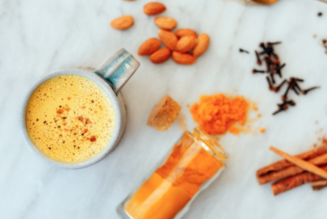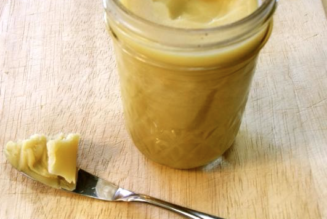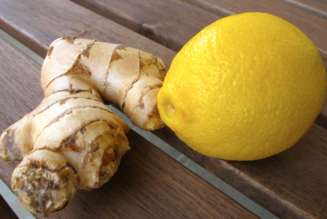Sustainability In Ayurveda
Essential Principles and Guidelines By Sarah Devi Otto-Combs
While words like “sustainability” and “Ayurveda” have become increasingly popular in recent years, there has been little conversation about what it really means to practice Ayurveda sustainably. As Ayurveda has taken hold in the West, there has been a corresponding surge in use of herbs from the Ayurvedic Apothecary. Aushadhis, or medicines, such as ashwagandha and triphala that were once foreign commodities are now commonplace and readily available in most cities in local coops and natural food stores. This in addition to the plethora of products available from India directly online has vastly changed the face of this market. While this has a been a boon for many reasons, there is a side of this industry that hasn’t been talked about as much, namely the environmental impact of ordering herbs from halfway around the world. How can we practice Ayurveda sustainably for both ourselves and our clients in a globalized marketplace, and what does that really mean?
To understand this question requires that we step back and take a look at the history of Ayurveda. Though Kerala is often referred to as the birthplace of Ayurveda, this science has been practiced across the Indian subcontinent for thousands of years, with varying expressions based on the climate, culture, and substances available for medicinal use. These regional differences were integral in shaping the differences seen in treatment, especially in terms of herbs. The underlying principles of treatment were and are the same, but the substances used for treatment were not. People were not importing herbs from across the globe, they were using what was available in their own backyards.
Environmental Sustainability – We Have Choices
Essential Principles & Guidelines …
It is precisely this notion that must be imported with the rest of the glory of Ayurveda. Many herbs used in Ayurvedic medicine for thousand of years are now endangered due to over harvesting, and should not be purchased. Such stories are a result of demand as much as they are of supply; let us be impeccable in our choices as consumers, purchasing only that which has been verifiably sourced as organic and sustainable. We must also consider that even when organic and sustainably harvested, these medicines are travelling thousands of miles to get to us, contributing to fossil fuel emissions in addition to often being shipped in plastic packaging and containers. By seeking out what is available locally or growing our own herbs, we are supporting sustainable practices and getting fresher product to boot!
How else does practicing Ayurveda sustainably translate practically? Remember that Ayurveda is vast in scope, and that herbs are in fact only a small portion of what we use to treat ourselves and clients. By following these simple guidelines, we can help ensure that Ayurveda is practiced effectively without putting unnecessary strain on precious resources like herbs and fossil fuels.
1) Diet & Lifestyle First.
Always use diet and lifestyle first and foremost to treat yourself and your clients! Ayurveda teaches us that all diseases begin in the g.i. tract, caused primarily by wrong foods, poor food combining, food at the wrong time, and eating food in the wrong way. If we give and take herbs without addressing this, then we are using herbs irresponsibly and unsustainably. This is a very different paradigm from what we are accustomed to in the West, and requires that we are personally accountable for our actions and how they impact our state of health. Don’t just blindly take herbs without addressing the foundation of what sustains you, namely your daily routines and what you digest!
2) Act Locally.
Get to know herbs available locally! This could mean using yarrow or elderberry instead of sitopaladi to support yourself in cold and flu season, or becoming familiar with the medicinal properties of your spice cabinet. Many locally available herbs have actions parallel to what we import from India, and when administered with with the precision of Ayurvedic preparation and administration can yield greater potency and efficacy due to the freshness of the plant.
Common spices such as cumin and turmeric also have profound healing properties, and are powerful allies in our arsenal of medicinal substances. Tulsi is an herb easily grown in a pot indoors, and is said to bring blessings simply by having it in your home! These are just a few examples of the many ways we can augment our health without importing herbs unnecessarily.
3) Be impeccable with sourcing!
Be impeccable with sourcing! If you or your practitioner determine that traditional Ayurvedic compounds are the best option for treatment, make sure that your herbs are organic and sustainably harvested. Be aware of what herbs are endangered, and of what herbs are appropriate substitutes for such medicines. Companies like Banyan Botanicals and Organic India are great resources for herbs from India, and many Ayurvedic practitioners grow their own herbs for client use. Herbs like jatamansi and sandalwood are highly endangered, and should not be used lightly. Though wonderful medicines, we have a vast array of other medicines to choose from that are not endangered, and in fact should do so.
The Takeaway …
The takeaway is that to practice Ayurveda does not require use of only the Indian pharmacopoeia. Ayurveda is a science based on a universally applicable set of principles, adaptable based on what you have access to, and does not require knowledge of traditional Ayurvedic formulations. To practice Ayurveda is to practice a philosophy of awareness of the impacts of the choices we make on a daily basis. The resources of our planet are precious and to be cherished as dearly as we cherish our own lives, for without them there is no us. It is through our cooperation and oneness with Nature that we are able to flourish, and to live this way is to embody our fullest capacity as human beings. This is the ultimate expression of Ayurveda.
About The Author

Sarah Devi Otto-Combs uses the Ayurvedic paradigm of constitutional analysis to help her clients achieve the foundation of good health that we all deserve and desire. Using Ayurvedic principles, she helps her clients to rectify both recent and long lingering imbalances, that they may live life to its fullest and with joy.
“There is so much to be gained through understanding ourselves through the lens of Ayurveda, and I am here to guide my clients through that process. My hope is that the aforementioned may serve as a guide to deeper understanding of this paradigm, as this is also the foundation of how we treat clients as Ayurvedic practitioners.” In addition to practicing and studying Ayurveda, Sarah Devi is a student of Odissi classical Indian dance. She is also the co-proprietor of Keeper of the Ink, an all natural tattoo aftecare product made in the Pacific Northwest. Feel free to contact her with any questions or comments.



![Female Health: Amenorrhea [cessation of menses] – An Ayurvedic Perspective](https://healthyayurveda.com/wp-content/uploads/2015/07/1.-Amenorhea--327x219.png)




